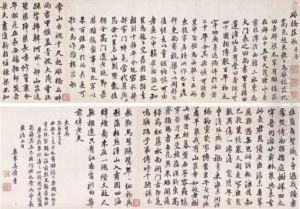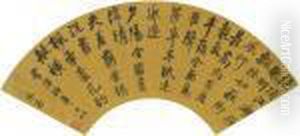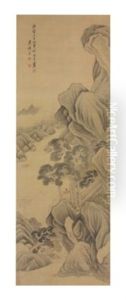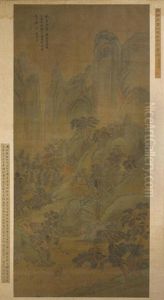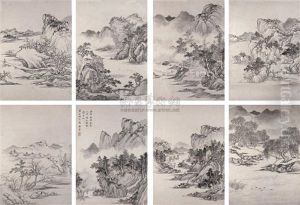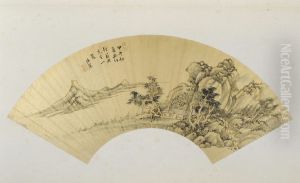Wu Weiye Paintings
Wu Weiye, also known by his courtesy name Meicun, was a prominent Chinese poet, calligrapher, and official during the late Ming and early Qing dynasties. Born in the tumultuous period that saw the fall of the Ming dynasty and the establishment of the Qing dynasty, Wu's life and career were deeply influenced by the political and social upheavals of his time. Despite his loyalty to the Ming dynasty, Wu managed to navigate the complex transitions of his era, eventually serving under the Qing regime while maintaining a critical stance towards its ruling elite.
Wu Weiye's contributions to Chinese literature, especially poetry, were significant. He was a leading figure in the so-called 'Poetry Revolution' that sought to break from the rigid, ornate styles of earlier periods and instead advocated for a return to the simplicity and emotional depth of ancient Chinese poetry. His works are characterized by their elegant language, rich cultural references, and profound emotional resonance. Wu's poetry not only reflected his personal experiences and feelings but also served as a vehicle for his critiques of the social and political issues of his time.
In addition to his literary achievements, Wu Weiye was also known for his calligraphy, which was highly regarded by his contemporaries. His style combined the strength and dynamism of earlier masters with a unique sense of elegance and grace, contributing to the evolution of Chinese calligraphic art.
Despite his accomplishments, Wu's life was marked by personal tragedies and the challenges of living through a period of significant historical change. His writings often express a sense of melancholy and loss, reflecting the hardships he faced, including the decline of his own fortunes following the fall of the Ming dynasty. Nevertheless, Wu Weiye's legacy endures through his influential contributions to Chinese literature and calligraphy, making him a celebrated figure in the cultural history of China.

